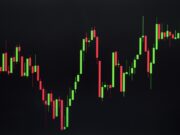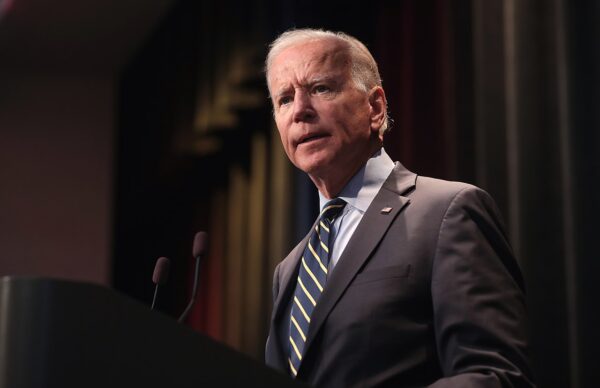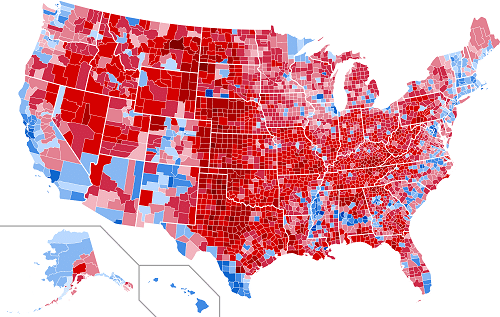Economists believe some version of President Biden’s nearly $2 trillion Build Back Better infrastructure spending plan will become law. Investors are already placing their bets, scooping up shares of their favorite industrials and materials stocks now, before major infrastructure projects begin.
The Senate has repeatedly challenged it, but economists at Goldman Sachs, Evercore ISI, Morgan Stanley and J.P. Morgan have all written in recent weeks that they believe it’s a matter of time until the Senate passes Biden’s Build Back Better legislation.
“In our view, even a conservative estimate of the ultimate outcome would be a still robust US $2.5 [trillion] between both plans over 10 years,” Michael Zezas, head of U.S. public policy research at Morgan Stanley, wrote on Wednesday.
“While that number might fall short of some progressives’ ambitions, it should get your attention,” he added. Such a gigantic amount of cash would drive an “infrastructure ‘supercycle,’” a powerful, nationwide demand for materials like asphalt and cement.
The bipartisan bill makes up for “what had been a lack of sustained investment in America’s traditional infrastructure: Highways and roads and bridges, transmission lines, water infrastructure,” Said Sam Ricketts, a senior fellow at the Center for American Progress. “The Build Back Better Act is an infrastructure bill not just for the 21st century, but for the future.”
Here are a few of the names that seem poised to benefit from upcoming infrastructure spending.
Martin Marietta Materials (MLM) is engaged principally in the building materials business, including aggregates, cement, ready mixed concrete and asphalt and paving product lines. The aggregates product line is sold and shipped from a network of more than 270 quarries and distribution facilities in 26 states, Canada, the Bahamas and the Caribbean Islands. The cement, ready mixed concrete and asphalt and paving product lines are located in strategic, vertically integrated markets, predominantly Texas and Colorado.
Building materials are used for construction of highways and other infrastructure projects, and in the non-residential and residential construction industries. Aggregates and cement products are also used in the railroad, agricultural, utility and environmental industries. The Company also has a Magnesia Specialties business that manufactures and markets magnesia-based chemical products used in industrial, agricultural, and environmental applications, and dolomitic lime.
MLM share price is up 53% for the year and some analysts agree that the stock has more room to run. Of 21 analysts offering recommendations for MLM, 11 rate the stock a Buy and 9 rate it a Hold and 1 gives it a Sell rating.
Eaton (ETN) doesn’t generate power, and it’s not a pure play on green energy like some of the other best “Biden policy stocks.” But, as a major supplier of electrical components and systems, it is absolutely an indirect play on this fast-growing industry, and one that is likely to thrive irrespective of the inevitable booms and busts we’ll see in the coming years. The wind and solar farms popping up around the country need to be incorporated into the national grid, and that’s precisely what Eaton does.
Eaton is a power management company with a 109-year history. It has been listed on the NYSE for 97 years and has paid a dividend every year since 1923. That’s remarkable consistency in an industry that has gone through incredible changes over the past century, and that’s a major selling point of this stock.
Many of the high-flying stocks in alternative energy might or might not be around a decade from now. This is still very much the wild west. But Eaton almost certainly will be, supplying the survivors with power systems and software and integrating them into the grid.
ETN currently sports a 1.9% dividend yield. There are 15 Buy ratings for the stock, 9 Hold ratings and 1 Sell rating.
If a boom in infrastructure spending is on the horizon, then it’s hard to avoid Caterpillar (CAT), the world’s leading maker of construction and mining equipment. The company also makes diesel and natural gas engines, industrial gas turbines and diesel-electric locomotives. Caterpillar is a cyclical business that tends to boom and bust to the tune of the broader economy.
Caterpillar has traded in a range for the past few years, unable to get much traction. Weakness in emerging markets really took the wind out of the stock’s sails.
Something interesting happened in 2020, however. Yes, Caterpillar tanked along with the rest of the market in February and March. But it not only recouped its losses in the rally that followed, it actually broke out of a three-year trading range.
Caterpillar is not purely a play on American infrastructure, of course. In fact, over half of its sales are now generated outside North America — which has helped its performance throughout the pandemic. Caterpillar continues to expand its manufacturing capabilities and product offerings in China, which is one of its hottest growth regions right now. The company has a strong global presence and should benefit from a recovery in emerging markets as well.
Even without the infrastructure bill, Caterpillar is forecasting that 2022 will be a year of growth as dealer inventories begin to rise and the company prepares for an upswing in the business cycle.
With over 25 years of consecutive annual dividend raises, Caterpillar has proved its resilience through difficult market cycles. Shares of Caterpillar have cooled down considerably as Wall Street buckles in for what could be record revenue and earnings in the coming years. With a 1.9% dividend yield and plenty of growth prospects, Caterpillar’s stock is one to watch.
Where to invest $1,000 right now...
Before you consider buying Caterpillar, you'll want to see this.
Investing legend, Keith Kohl just revealed his #1 stock for 2022...
And it's not Caterpillar.
Jeff Bezos, Peter Thiel, and the Rockefellers are betting a colossal nine figures on this tiny company that trades publicly for $5.
Keith say’s he thinks investors will be able to turn a small $50 stake into $150,000.
Find that to be extraordinary?
Click here to watch his presentation, and decide for yourself...
But you have to act now, because a catalyst coming in a few weeks is set to take this company mainstream... And by then, it could be too late.
Click here to find out the name and ticker of Keith's #1 pick...










